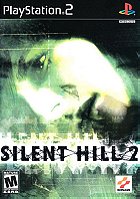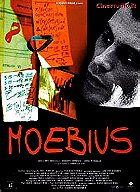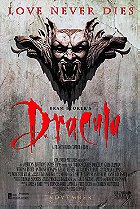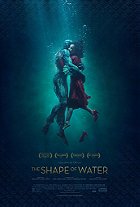Silent Hill 3 takes on another direction from 2. 2 was at its core a story about two mature adults dealing with the tragic end of their long and intimate relationship. This tragic, irreversible aspect of the story is shown in a cold and slumber atmosphere. Meanwhile 3 is the story of a teenager nearly reaching adulthood, facing a nightmarish version of almost exclusive female dramas and dangers, and the meddling of her identity and body by various larger actors. Thus the style of the game is much more aggressive and carnal. And although there is one big irreversible event in the story, Heather’s prospects never succumb to it, having a more vital, less depressing note than 2.
The rust, mechanical contraptions, and hellish creatures from 1 make a return, yet there is an emphasis on body horror, and thus a certain sexual undertone to the sceneries and monsters, plus maternal imagery. There’s a limit as to how much mutilated bodies and reddish metallic ambients can make you uncomfortable, these motifs can feel a bit overused yet the game does try to vary its presentation in textures and architecture. 2 tried to transmit James’ confusion and depression through fog and darkness, yet these elements end up so overused that the game’s atmosphere seems dull and lazy. 2’s sceneries are also mostly endarkened narrow corridors and rooms. 3 on the other hand, interchanges between narrow and broad sceneries, and plays a bit more with lightning, having a couple of dimly lit places instead of complete darkness. The thwarted conventional, every-day public spaces from the first levels feel fresh (in fact, I consider them my favorite part of the game), especially in comparison when we go back to Silent Hill, specifically when we navigate through Brookhaven Hospital once again.
Now, I asked myself the question, what do you do in Silent Hill, and why do you do it? Silent Hill was born when Konami asked a group of developers to make a game to compete with Resident Evil. Konami didn’t care beyond that: they wanted a clone so they could take some of the survival horror market for themselves. This inception created a game that had a lot of interesting ideas and a couple of additions or twists in gameplay terms, yet was kept inside a previously developed structure that was kind of limited on its own right, and didn’t make much sense in the context of SIlent Hill.
In the original Resident Evil, the puzzles and the structure of keys and unlockable doors and areas made sense not just because it happened in an ancient and mysterious mansion, but because underneath lied secret laboratories, and they had these puzzles as means of security. In Silent Hill, no matter how twisted or abstracted the demented environments got, they still were limited in their key-items, unlockable areas structure, and thus the concept never got as far as it could. The combat, mostly inherited from Resident Evil too, didn’t have that ‘action’ edge of that other franchise, and so it also stayed in a weird, not so clunky, not so developed, not so meaningful corner.
You understand the structure of the places, you know the deal with the enemies, and you solve the puzzles which make you feel smart. It’s creepy yet familiar, and that’s part of the problem.
With that said, I think 3’s step-up and emphasis in combat not only enhances the gameplay loop of the franchise, but also helps bring home part of its themes. First I’ll talk a bit about the enhancements.
In regards to design, the meaning behind the enemies is not as evident as the ones from 2, and particularly the dogs and the bugs have no psychological depth in their design. In gameplay terms they’re much more engaging than the enemies from 2: they’re more aggressive and varied. As said before the combat is not as developed as Resident Evil (you still have auto-aim and the enemies have no special vulnerability points) and it’s still clunky and messy, but the parry has a much larger significance. There are different strategies and tools that the player can use to deal with the enemies. A couple of examples:
A bullet proof vest that will lower the damage taken but slow down Heather.
Heather can now perform a 180° turn, which is incredibly satisfactory and useful.
A very useful melee weapon, the Katana, which deals a lot of damage and is fast to use but requires short distance to strike and can’t deal with multiple enemies (the game also has an extra kind of blow for melee weapons, pressing the control pad forward at the moment of attack will make a medium distance attack).
A taser, which can stun the enemies at the first attack and gives a great chance to finish them off on the ground, but has very limited “ammo”.
A couple of bosses will actually test the player, instead of the ones from 2.
The game also offers far less health and ammo items than 2.
As I said before, the emphasis on combat mechanics and tools, and the aggressiveness of the enemies, make sense within the themes and the story. It emphasizes Heather's rebellious and determined character, and Claudia's intentions of growing hate within her. In fact, if the player kills enough enemies, they will get an ending in which Heather has been completely possessed by her violent pulses.
I’ve read a couple of people complain about how the sect plot that 3 takes back from 1 is not as engaging or profound as the personal plot from 2. I differ from this view to a certain extent. For one I think the sect element contributes to the game’s themes. Both Claudia, Vincent, and Leonard (the authority figures of the Order) try to give a certain identity or use to Heather, similar to how society does the same when adolescents reach adulthood. On the other hand the sect characters are silly and ridiculous in a twisted manner because, one, in real life the people involved in sects are like that, they are fucking crazy and have infantile reasoning, and two, that’s how adults seem to teenagers, as crazy or pathetic, completely compromised with a certain narrative individuals. Now, the problem with the sect are two: one, there’s hardly any moral ambiguity in their actions and ideas, in contrast with how many arguments could be had about characters’ actions in 2. The sect is silly and crazy, what else can you think of them? They torture and kill people (even children) and worship clearly demonic and evil entities. There is no moment in which we question if we are actually the bad guys and there are truly divine intents in God and her minions. Two, what you gain in thematic you lose in intimidation and fear. Both Silent Hill 1 & 3 antagonists are not scary.
Nevertheless, the Order characters have a couple of interesting characteristics. Vincent seems to realize the malignant nature of God and recognizes the true, psychological motivation behind Claudia's religious pursuits. Claudia on the other hand realizes that she will be unable to enjoy paradise due to her terrible actions, yet sacrifices herself despite this.These hues elevate the Order characters a bit, specially in contrast with the ones from 1. It’s really stupid that Claudia has a british accent though. Also, I don’t understand why Claudia risks Heather being killed off by the monsters. I get that she’s trying to grow hate within her, but wasn’t enough with the thing that happens mid-game? This is what I refer when I talk about the dichotomy of these games between context and gameplay loop.
Overall Silent Hill 3, despite its design's limited conventions and derivative aspects, manages to create a certainly atmospheric and deeply thematic, memorable experience.
ESPAÑOL:
Silent Hill 3 toma otra dirección respecto al 2. 2 tenía como núcleo una historia sobre dos adultos maduros enfrentando el trágico final de su larga e íntima relación. Este aspecto trágico e irreversible de la historia se muestra en una atmósfera fría y sombría. Mientras tanto, 3 es la historia de una adolescente que está casi alcanzando la adultez, enfrentando una versión pesadillesca de dramas y peligros casi exclusivamente femeninos, y la intromisión en su identidad y cuerpo por parte de diversos otros actores. Así, el estilo del juego es mucho más agresivo y carnal. Y aunque hay un gran evento irreversible en la historia, las perspectivas de Heather nunca sucumben a él, teniendo una nota más vital y menos depresiva que 2.
El óxido, los artilugios mecánicos y las criaturas infernales del Silent Hill original regresan, pero hay un énfasis en el horror corporal, y por lo tanto, un cierto subtono sexual en los escenarios y monstruos, además de la imaginería maternal. Hay un límite en cuánto a cuántos cuerpos mutilados y ambientes metálicos rojizos pueden hacerte sentir incómodo, estos motifs pueden sentirse un poco sobre utilizados, sin embargo, el juego intenta variar su presentación en texturas y arquitectura. La segunda entrega intentó transmitir la confusión y la depresión de James a través de la niebla y la oscuridad, sin embargo, estos elementos terminan siendo utilizados en exceso, y la atmósfera del juego termina por resultar aburrida y perezosa. Los escenarios de 2, también, son en su mayoría pasillos estrechos y habitaciones oscuras. 3, por otro lado, alterna entre escenarios estrechos y amplios, y juega un poco más con la iluminación, teniendo un par de lugares ligeramente iluminados en lugar de completa oscuridad. Los espacios públicos convencionales y cotidianos de los primeros niveles se sienten frescos (de hecho, los considero mi parte favorita del juego), especialmente en comparación a cuando regresamos a Silent Hill, específicamente cuando navegamos por el Hospital Brookhaven una vez más.
Ahora, me hice la pregunta, ¿qué hacés en Silent Hill y por qué lo hacés? Silent Hill nació cuando Konami pidió a un grupo de desarrolladores que hicieran un juego para competir con Resident Evil. A Konami no le importaba nada más allá de eso: querían un clon para poder ganar parte del mercado del survival horror. Esta concepción creó un juego que tenía muchas ideas interesantes y un par de adiciones o giros en términos de jugabilidad, pero que se mantuvo dentro de una estructura previamente desarrollada que estaba bastante limitada por sí misma, y no tenía mucho sentido en el contexto de Silent Hill.
En el Resident Evil original, los puzzles y la estructura de llaves y puertas y áreas desbloqueables tenían sentido no solo porque sucedía en una mansión antigua y misteriosa, sino porque debajo se ocultaban laboratorios secretos, y tenían estos puzles como medios de seguridad. En Silent Hill, sin importar cuán retorcidos o abstractos se volvían los demenciales entornos, aún estaban limitados en su estructura de ítems-llave y áreas desbloqueables, y por lo tanto, el concepto nunca llegó tan lejos como podría haberlo hecho. El combate, en su mayoría heredado también de Resident Evil, no tenía ese toque de 'acción' de esa otra franquicia, y así también se quedó en un rincón extraño, no tan torpe, no tan desarrollado, no tan significativo.
Este fenómeno fundacional que comento, pone un tope infranqueable a la calidad de estos juegos. Entendes la estructura de los lugares, sabes como lidiar con los enemigos y resolvés los puzzles que te hacen sentir listo. Es espeluznante pero familiar, y eso es parte del problema.
Dicho esto, creo que el salto y énfasis en el combate de 3 no solo mejora el ciclo jugable de la franquicia, sino que también ayuda a transmitir parte de sus temas. Primero hablaré un poco sobre las mejoras.
En cuanto a diseño, el significado detrás de los enemigos no es tan evidente como en los de 2, y particularmente los perros y los insectos directamente no tienen profundidad psicológica. En términos de jugabilidad, son mucho más dinámicos que los enemigos de 2: son más agresivos y variados. Como se dijo antes, el combate no está tan desarrollado como en Resident Evil (todavía tienes auto-apuntado y los enemigos no tienen puntos de vulnerabilidad particulares) y aún es torpe y caótico, pero el parry tiene un rol mucho más significativo. Hay diferentes estrategias y herramientas que el jugador puede usar para lidiar con los enemigos. Un par de ejemplos:
Un chaleco antibalas que reduce el daño recibido pero ralentiza a Heather.
Heather ahora puede realizar un giro de 180°, lo cual es increíblemente satisfactorio y útil.
Un arma cuerpo a cuerpo muy útil, la Katana, que inflige mucho daño y es rápida de usar pero requiere una distancia corta para asestar y no puede lidiar con varios enemigos (el juego también tiene un tipo adicional de golpe para armas cuerpo a cuerpo, al presionar el d-pad hacia adelante en el momento del ataque se hará uno a distancia media).
Un táser, que puede aturdir a los enemigos en el primer ataque y da una gran oportunidad para acabar con ellos en el suelo, pero tiene "municiones" muy limitadas.
Un par de los jefes realmente van a poner a prueba al jugador, a diferencia de los de la segunda entrega.
El juego también ofrece muchos menos ítems curativos y munición que 2.
Como dije antes, el énfasis en las mecánicas y las herramientas de combate, y la agresividad de los enemigos, tienen sentido dentro de la temática y la historia. Enfatiza el carácter rebelde y determinado de Heather, y las intenciones de Claudia de cultivar el odio dentro de ella. De hecho, si el jugador mata a suficientes enemigos, obtendrán un final en el que Heather ha sido completamente poseída por sus impulsos violentos.
He leído a un par de personas que se quejaban de cómo el argumento de la secta que la tercera entrega retoma del primer juego no es tan atractivo o profundo como el argumento personal de 2. Difiero de esta opinión hasta cierto punto. Por un lado, creo que el elemento de la secta contribuye a los temas del juego. Tanto Claudia, Vincent y Leonard (las figuras de autoridad de la Orden) intentan dar una cierta identidad o uso a Heather, similar a cómo la sociedad hace lo mismo cuando los adolescentes alcanzan la adultez. Por otro lado, los personajes de la secta son tontos y ridículos de manera retorcida porque, primero, en la vida real las personas involucradas en sectas son así, están completamente locas y tienen un razonamiento infantil, y dos, así es como los adultos parecen a los adolescentes, como locos o patéticos, completamente comprometidos con una narrativa determinada. Ahora, el problema con la secta son dos: uno, casi no hay ambigüedad moral en sus acciones e ideas, en contraste con la cantidad de argumentos que podrían surgir sobre las acciones de los personajes 2. La secta es tonta y loca, ¿qué más podes pensar de ellos? Torturan y matan personas (incluso niños) y adoran a entidades claramente demoníacas y malignas. No hay momento en el que cuestionemos si somos realmente los malos y si realmente hay intenciones divinas en Dios y sus secuaces. Dos, lo que ganas en temática lo perdes en intimidación y miedo. Los antagonistas de Silent Hill 1 y 3 no dan miedo.
Sin embargo, los personajes de la Orden tienen un par de características interesantes. Vincent parece darse cuenta de la naturaleza maligna de Dios y reconoce la verdadera motivación psicológica detrás de las búsquedas religiosas de Claudia. Claudia, por otro lado, se da cuenta de que no podrá disfrutar del paraíso debido a sus terribles acciones, sin embargo, se sacrifica a pesar de esto. Estos matices elevan un poco a los personajes de la Orden, especialmente en contraste con los de la primera entrega. Ah, eh, es muy estúpido que Claudia tenga acento británico. Además, no entiendo por qué Claudia arriesga que Heather sea asesinada por los monstruos. Entiendo que está tratando de cultivar el odio dentro de ella, ¿pero no fue suficiente con lo que sucede a mitad del juego? A esto me refiero con la dicotomía que tiene la franquicia entre contexto y ciclo jugable.
En general, Silent Hill 3, a pesar de las convenciones limitadas de su diseño y sus aspectos derivativos, logra crear una experiencia ciertamente atmosférica y profundamente temática, memorable.
 Login
Login
 Home
Home 24 Lists
24 Lists 12 Reviews
12 Reviews Collections
Collections
 0 comments,
0 comments, 







